Cutting Joinery for the Toolbox Case
Stopped dadoes and rabbets are cut by machine and fitted with hand tools.
Start your 14-day FREE trial to watch this video
Plus, access more than 500 video workshop episodes when you become a member
In this video workshop you’ll get a taste of what it’s like at the North Bennet Street School. So sit back, grab a notebook, and learn how to build a toolbox, the North Bennet Street way.
In this episode, Matt Wajada is working on case assembly, particularly on the stopped dadoes and rabbets.
Videos in the Series
-
All About the North Bennet Street ToolboxJanuary 24, 2017
-
The History of the North Bennet Street ToolboxJanuary 24, 2017
-
Easy Way to Glue up PanelsJanuary 24, 2017
-
Dovetailed Toolbox Case Needs Careful LayoutJanuary 31, 2017
-
Hand-Cut Dovetails: Pins FirstFebruary 7, 2017
-
Hand-Cut Dovetails: Tails SecondFebruary 14, 2017
-
Finessing the Fit of Case DovetailsFebruary 14, 2017
-
Cutting Joinery for the Toolbox CaseFebruary 21, 2017
-
Gluing Up a Toolbox CaseFebruary 28, 2017
-
Making Dividers for the ToolboxMarch 7, 2017
-
How to Attach Dividers to the CaseMarch 14, 2017
-
How to Make Dovetailed Drawer Partitions: Dado FirstMarch 14, 2017
-
How to Make Dovetailed Drawer Partitions: Dovetail SecondMarch 14, 2017
-
Laying Out Dovetail Joinery for the DrawersMarch 21, 2017
-
Cutting Half-Blind Dovetails for DrawersMarch 28, 2017
-
How to Fit DrawersApril 4, 2017
-
Cutting Joinery for a Frame-and-Panel DoorApril 11, 2017
-
Make a Raised Panel for a DoorApril 11, 2017
-
How to Assemble a Raised-Panel DoorApril 11, 2017
-
How to Hang the Door and Add a LocksetApril 18, 2017
-
How to Make a Shiplapped Back PanelApril 25, 2017

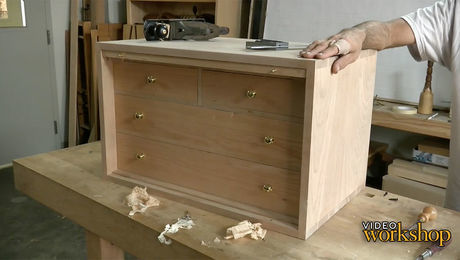

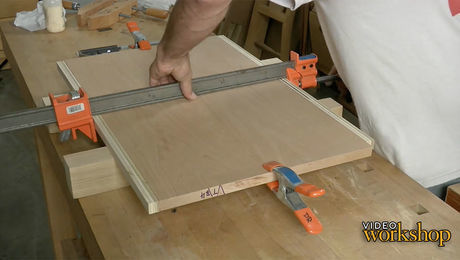

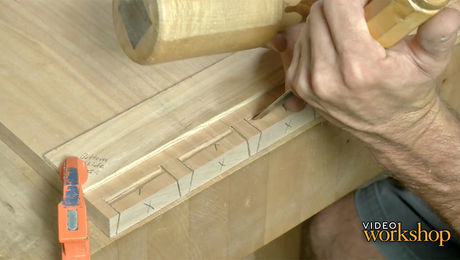
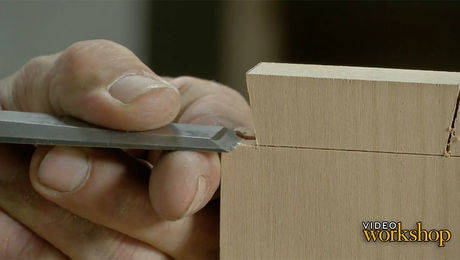
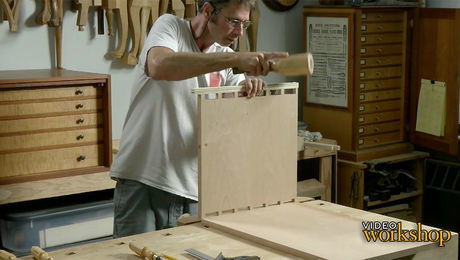
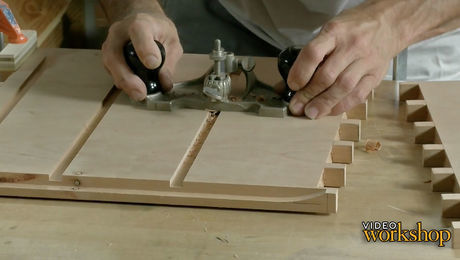
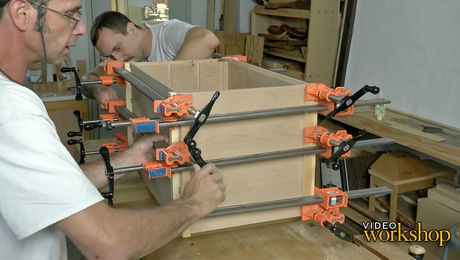
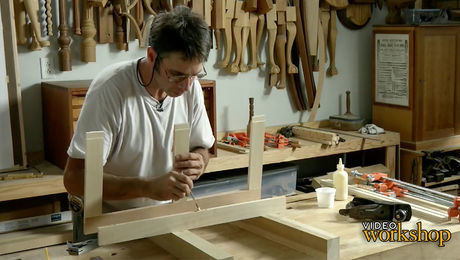
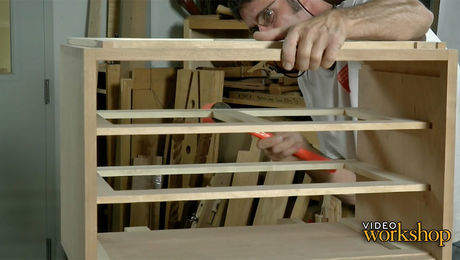
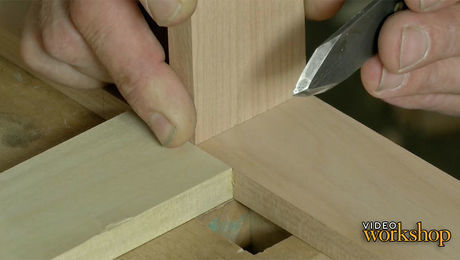
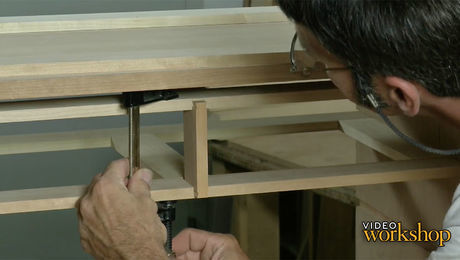
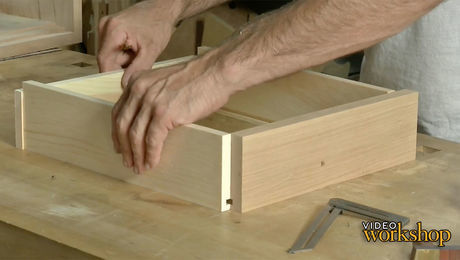
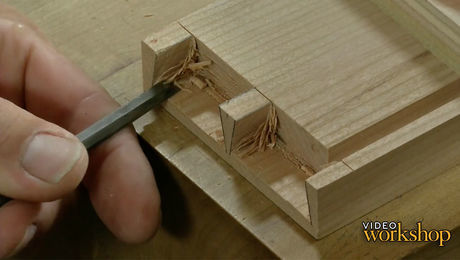
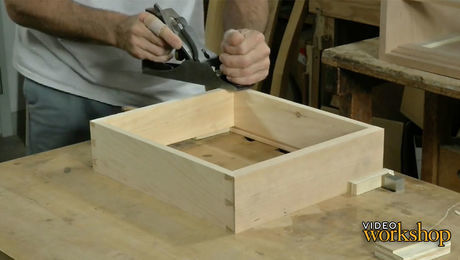
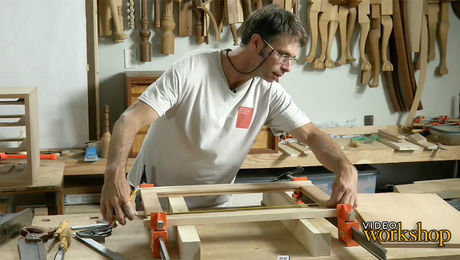
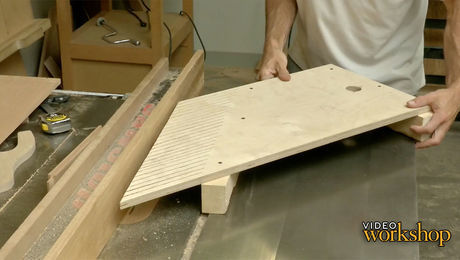
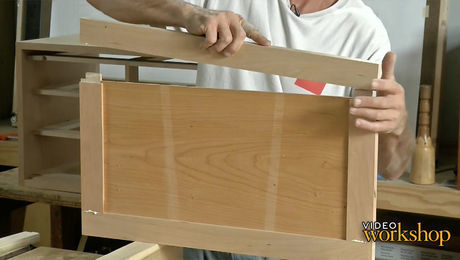
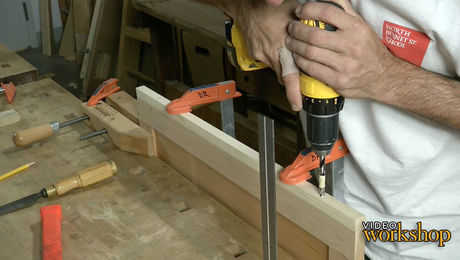
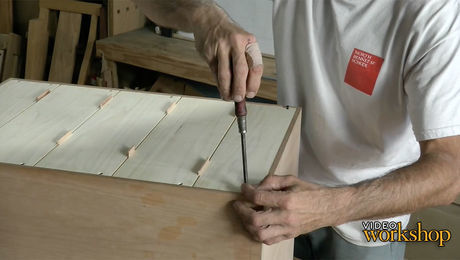






Comments
After cutting the rabbets, those end pins sure look weakened. Perhaps using half-blind instead of through dovetails would have left a bit more support? (And maybe looked more finished?) Just a thought....
73
I could hardly watch this episode - why would anyone try and cut stopped dados on a table saw - it is an accident waiting to happen. these would have been safe and easy using a router.
It is dangerous to cut stopped dados on the tablesaw without a stop block behind the piece. As Matt explains, this is a safe way and efficient of doing it. But as always, and as CTSailor says, if you're not comfortable doing anything in the shop, don't.
If stopped dado's on the table saw does not feel safe -- don't it. But to claim it is an accident waiting to happen? Maybe one should consider how many such dado's have been cut by students making this, their first substantial project at NBSS, without incident before making a blanket statement that it is not safe. Done properly it is plenty safe. Routers can be too. And Chisels and saw. To each their own.
Ben Strano,
Could you please share the plans...
We are still working on the plans. I'll post a link when they're finished.
I don't quite understand the logic of the stopped dado cuts. Matt W. mentioned in the introduction video that the table saw was fast but the whole set up seems so Micky Mouse and even worse the dado blade tore out the case like crazy. Also, that little piece of wood might give control but is not going to stop anything.
I'm glad that Matt is showing is how they do things at his school but it just seems like a router table would be a lot more efficient for this exercise.
Overall, I like the slow pace of this vid series, especially the hand tool part, but that last 29 minutes had me scratching my head.
I love watching Matt work. It's so relaxing.
I have been studying and practicing hand cut dovetails for two years, and have decided to give up on them until seeing this video. His way of making them accurate is brilliant. I am going to return to hand cut dovetails as a result of seeing this vedeo.
I've taken several classes at NBSS with Matt. He is a phenomenal instructor and an encyclopedia of woodworking knowledge. The stopped dado operation is something that Matt has taught before. As indicated, only attempt when there is a stop set up behind to make a safe cut.
Matt's focus is always safety and how to execute an operation safely. He explains the operation and how to do it safely, as he did when finishing the dado cuts with mallet and chisel. I hope to see more of Matt on FWW videos.
Im excited to see the plans too.
i tried hand cut dovetails more than a few times. then i bought the leigh jig. i'm not unhappy with the leigh results, but the more i do this work, the less i'm drawn to machines. loud, dangerous, dusty, etc. i've never seen a more thorough "teacherly" approach to the process. i'm going to go practice again. this series is kind of a revelation to me. i feel like i'm actually in a class at NBSS. thank you for this.
Where will the link for the plans be posted? Any idea when they might be forthcoming?
Great series, been taking all the valuable education in. I'm failing to understand something, though. Why were the dados not done on a router table or with a router? Seems like it was be easier, quicker with less waste to chisel, and safer. Of course, this video series is on a hand-cut dovetail tool box, so I know they aren't necessarily going for 'quicker,' but if you're going to use power tools for part of the operation, would there be any reason why he didn't use a router?
Keep in mind that this is a student project, which is part of a specific curriculum. So a lot of what Matt does is based on teaching skills you might not otherwise learn. However, it's really important to reference each cut off of the same face (i.e. consistently the top or bottom) so that the cuts are in exactly the same place on the opposing parts. If you did it on the router table that would be much harder since the fences rarely go more than 12" away from the bit.
It can certainly be done, and if you're more comfortable doing it on a router table (or any other method) by all means, that's how you should do it, but the method Matt demonstrates here is safe and efficient.
I ordered printed plans and there were errors with measurements. One in particular the side panel reads3/4" think by 3/4" wide. No explanation or article included with this one either.
I've read all the comments but I have to say I thoroughly enjoyed this video. I learned a ton and enjoyed every minute of it. People have to keep in mind they people do what they are comfortable with. Just because you do it a certain way doesn't mean everyone has to do it. I've cut stopped dado a table saw. The only thing I'll comment on is he is cutting with the grain so isn't that a groove? Dado is against the grain? :)
Log in or become a member to post a comment.
Sign up Log in